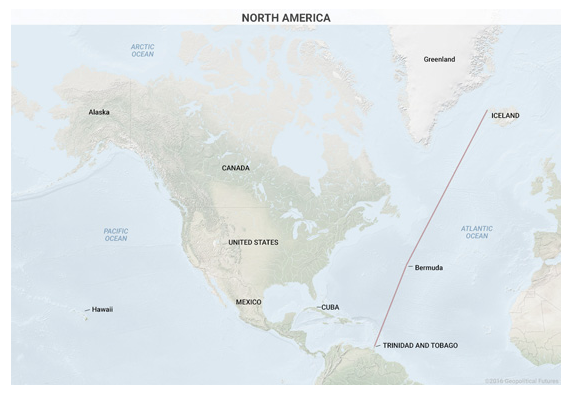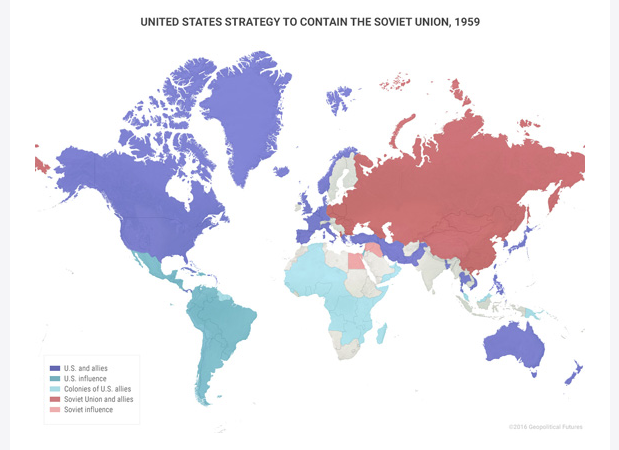Neither of these came to pass, but the American strategic culture was to assume the worst case and generate potential responses. Interestingly, as late as 1920, when the United States was preparing war plans to confront potential enemies after World War I, one of the plans outlined the defense against a potential British invasion down the Hudson Valley.
This fear of the British was not addressed until World War II, when London needed American destroyers to protect convoys heading for Britain. The United States gave them the destroyers… but at a price. The British had to permit the United States the use of all of their naval bases in the region—in Newfoundland, the Bahamas, Jamaica, St. Lucia, Trinidad, Antigua, British Guyana, and Bermuda. Given American resources, the ability to use the bases was the ability to dominate them.
Lend-Lease, as it was called, essentially was the British surrender of their naval facilities in the Western Hemisphere to the United States. It transferred control of the Atlantic on a line from Iceland (occupied by the US in 1940) to Bermuda to Trinidad. This gave the United States control over the Atlantic approaches to the US (once German U-boats were dealt with) and effective control of the Caribbean. With this, the United States achieved its defensive goal of controlling the maritime approaches to its territory.

As the United States increased its power, it increased its fears. North America can only be threatened from the sea, but creating massive fleets able to pose a threat to the US is enormously expensive and requires substantial technical ability. The best way to defeat a fleet is to never allow it to be built. In this case, divert the resources of potential challengers from naval construction to land warfare.
The Containment Strategy
The fear of the United States in both World War I and World War II was that a single power, Germany, would conquer Europe. Lacking land-based threats, Germany would be free to construct fleets at its leisure and challenge the US from the sea. This fear led to the American intervention after World War I when weeks after the Russian czar fell, it appeared that German troops in the east would be transferred to the west and overwhelm the British and the French alliance.
This fear also led to the US engaging Japan and Germany simultaneously in World War II. After defeating the Japanese navy and the German U-boats and co-opting the waning British presence, the US emerged from World War II as the first power in human history to dominate all of the world’s oceans.
The World Wars cemented control of the seas as the single most important element of American strategy. The vital corollary that followed was that the US must maintain a balance of power, particularly in Europe and Asia, to prevent the construction of navies.









